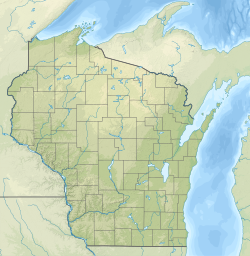Parts of this article (those related to demographics) need to be updated.(November 2023) |
Shullsburg, Wisconsin | |
|---|---|
 Shullsburg Public School | |
 Location of Shullsburg in Lafayette County, Wisconsin. | |
| Coordinates: 42°34′26″N90°13′55″W / 42.57389°N 90.23194°W | |
| Country | United States |
| State | Wisconsin |
| County | Lafayette |
| First settled | 1827 |
| First platting | 1846 |
| Founded by | Jesse Shull |
| Area | |
• Total | 1.33 sq mi (3.45 km2) |
| • Land | 1.33 sq mi (3.45 km2) |
| • Water | 0 sq mi (0.00 km2) |
| Elevation | 980 ft (300 m) |
| Population | |
• Total | 1,173 |
| • Density | 881/sq mi (340/km2) |
| Time zone | UTC-6 (Central (CST)) |
| • Summer (DST) | UTC-5 (CDT) |
| ZIP codes | 53586 |
| Area code | 608 |
| FIPS code | 55-73825 |
| GNIS feature ID | 1574081 |
| Website | www |

Shullsburg is a city in Lafayette County, Wisconsin, United States. The population was 1,173 at the 2020 census. The city is adjacent to the Town of Shullsburg. Founded in 1827, it is one of the oldest settlements in Wisconsin. There are 34 buildings listed on the National Register of Historic Places [3] on its historic Water Street Commercial District. It is located within the Midwestern Driftless Area and is known for its history of lead mining and its cheese industry.
Contents
- History
- St. Matthew's Catholic Church and Parish
- Shullsburg School
- Geography
- Demographics
- 2010 census
- Notable people
- See also
- References
- External links






